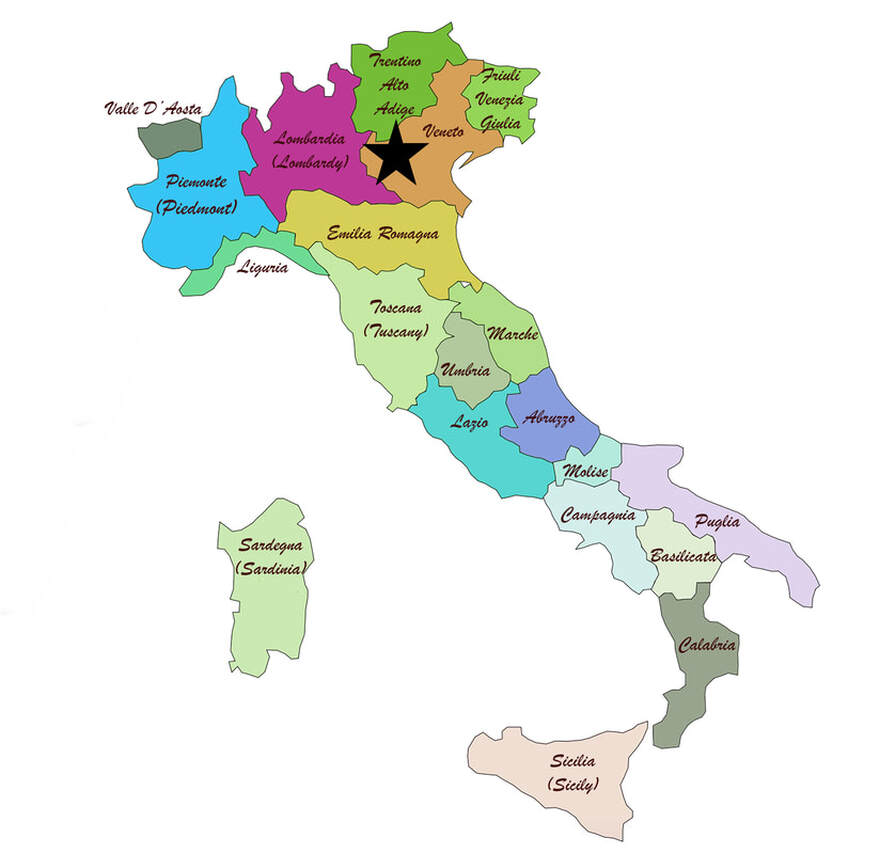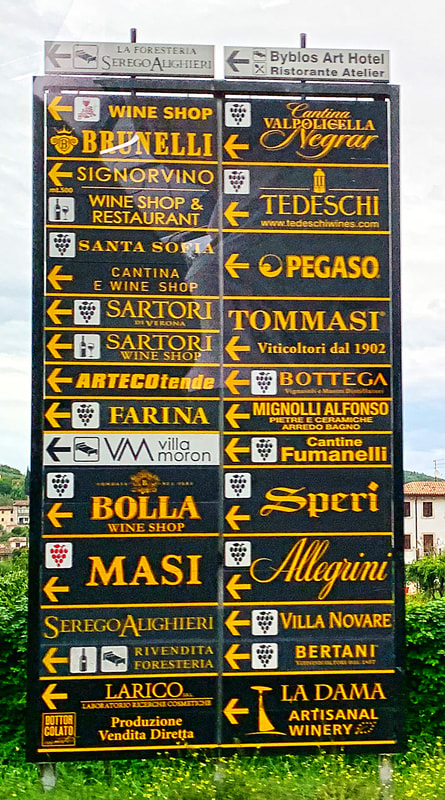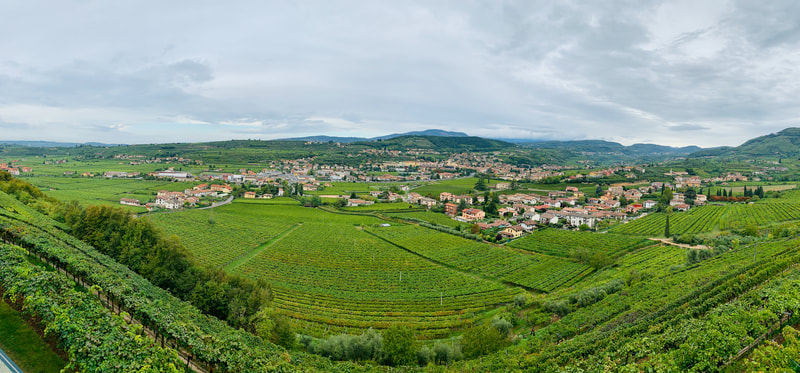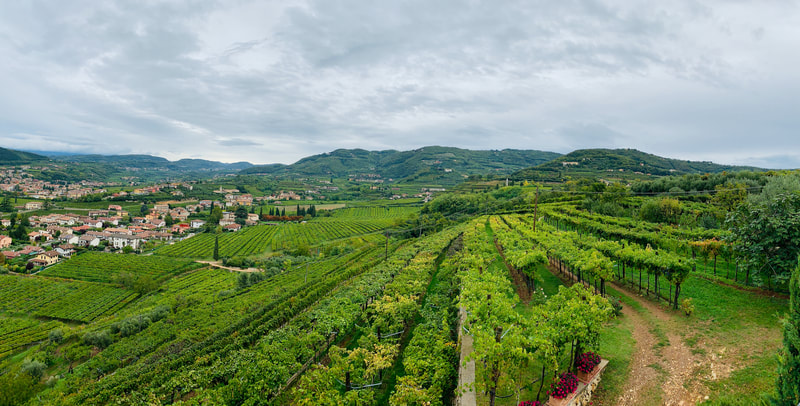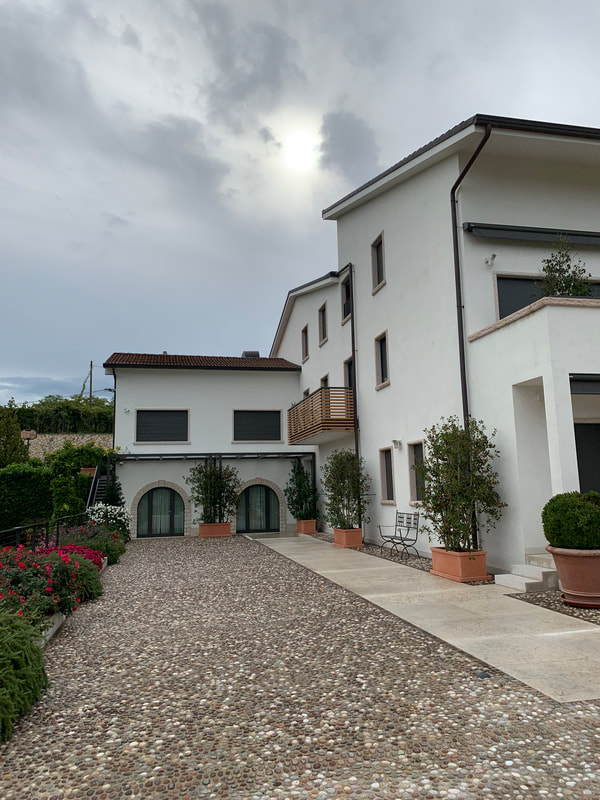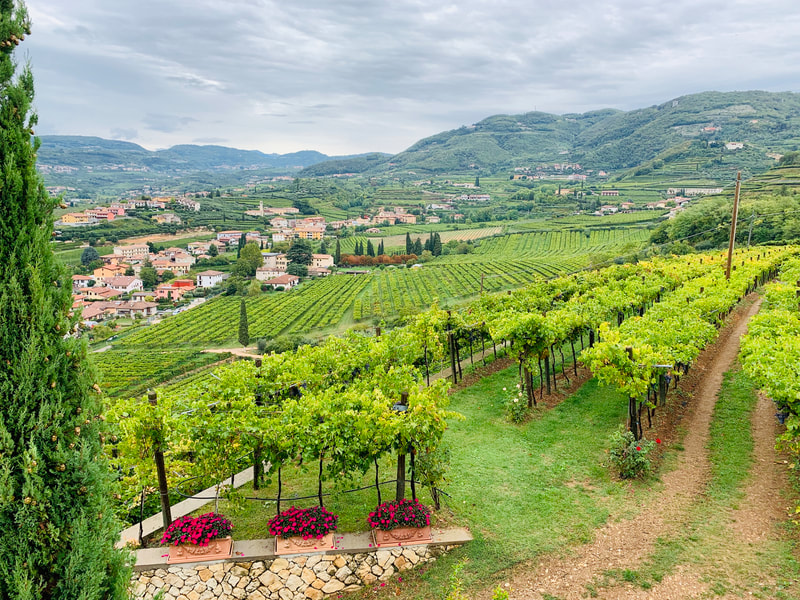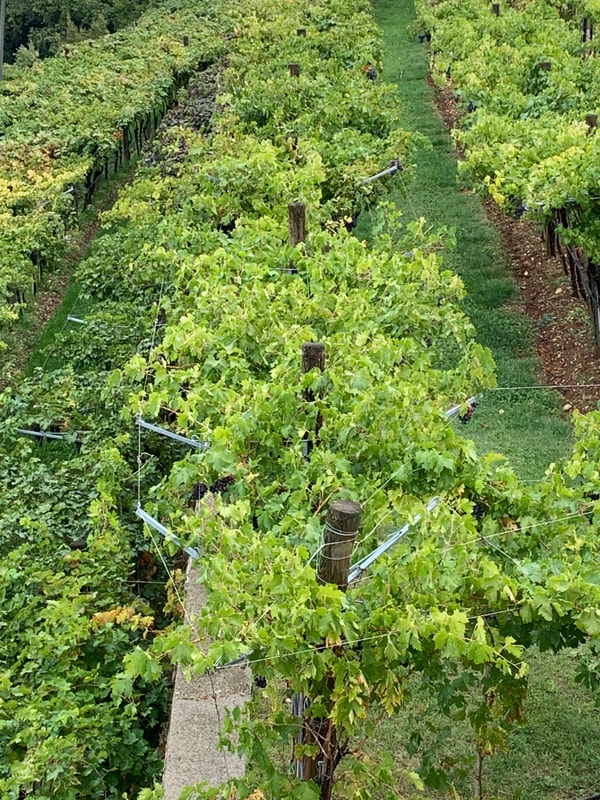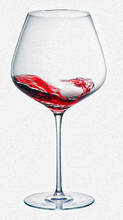
Region: Veneto
Quality Level in EU/Italian Wine Law: Amarone della Valpolicella DOCG, Recioto della Valpolicela DOCG, Valpolicella DOC, Valpolicella Ripasso
Established: Previously covered under Valpolicella DOC but was elevated to DOCG in 2010
Primary Grape Varieties: Corvina, Rondinella, Corvinone and other approved varieties.
Pairs with: Steaks, stews and ribs, pasta and beans, asian fusion, lamb, veal
Characteristics: Amarone wines are complex, earthy, and ripe with flavors of dried black fruit. With a little age, the wines develop oxidized notes of caramel and other flavors. They are high in alcohol (16-17%), but can maintain balance with deep fruit concentration and acidity. While the wines receive extensive barrel aging, they are usually neutral oak and do not generally add wood or oak aromas or flavors. These wines are made for long aging. Quintarelli’s Amarones are unambiguously traditional in style.
Serve: Valpolicella - slightly chilled, Amarone - Room Temperature, Recioto and Ripasso - Room Temperature
Today, we will be discussing another of the great Italian wines that is made in a very unique form and results in various types of wines, depending on the exact timing of the process. The grape is Corvina – at the base of the wine at least, and the wine we will start with is Valpollicella.
Corvina seems to express itself best in the hillsides that form the Bardolino and Valpolicella zones in the region of Veneto. Valpolicella is to the east of Lake Garda and the Bardolino zone with vineyard surrounding the city of Verona. The zone extends from the Lessini mountains in the north to the Veronese plain and overlaps with the Soave zone to the east.
Well before Amarone wine rose to be a luxury wine of Italy, Valpolicella wine was the mainstay of the area. It is a simple yet refreshing wine but did not aspire to be any more than a table wine to go with Gnocchi or another local dish. After Amarone rose to significance, the producers of Valpolicella decided to add muscle to the wine, improve the quality and get it into the international market. The key difference in the wine is that Amarone grapes remain in a drying state or “appassimento” mode until the wine fully ferments and can become a dry wine. Valpolicella is made from the same grapes but in a more traditional vinification method and may retain some residual sugar (maximum of 0.4% potential alcohol) but relies on the same basic blend of grapes:
The Valpolicela wine is made in a Rosso and Superiore style with an age requirement of one year for the Superiore. The entire region is number third in red wine production behind Chianti and Montepulciano d’Abruzzo and many believe the name is a blend of Greek and Latin names that translates into “Valley of many cellars”. The Valpolicella wine is bright, lively and balanced with flavors of savory but sour cherry.
The Recioto style of sparkling and dessert wines are made with the appassimento approach but with residual sugar of 2.8% minimum potential alcohol and Ripasso red wines are made when Valpolicella is blended with still fermenting Amarone grapes for rounder and deeper flavor profiles. The four styles of wines (these and Valpoicella and Amarone) are each unique and represent this unique region of northern Italy.
Quality Level in EU/Italian Wine Law: Amarone della Valpolicella DOCG, Recioto della Valpolicela DOCG, Valpolicella DOC, Valpolicella Ripasso
Established: Previously covered under Valpolicella DOC but was elevated to DOCG in 2010
- 45-95% Corvina
- 5-30% Rondinella
- Max 25% other approved grapes.
- Molinara is used in small amounts (sometimes) to add lean acidity
Primary Grape Varieties: Corvina, Rondinella, Corvinone and other approved varieties.
Pairs with: Steaks, stews and ribs, pasta and beans, asian fusion, lamb, veal
Characteristics: Amarone wines are complex, earthy, and ripe with flavors of dried black fruit. With a little age, the wines develop oxidized notes of caramel and other flavors. They are high in alcohol (16-17%), but can maintain balance with deep fruit concentration and acidity. While the wines receive extensive barrel aging, they are usually neutral oak and do not generally add wood or oak aromas or flavors. These wines are made for long aging. Quintarelli’s Amarones are unambiguously traditional in style.
Serve: Valpolicella - slightly chilled, Amarone - Room Temperature, Recioto and Ripasso - Room Temperature
Today, we will be discussing another of the great Italian wines that is made in a very unique form and results in various types of wines, depending on the exact timing of the process. The grape is Corvina – at the base of the wine at least, and the wine we will start with is Valpollicella.
Corvina seems to express itself best in the hillsides that form the Bardolino and Valpolicella zones in the region of Veneto. Valpolicella is to the east of Lake Garda and the Bardolino zone with vineyard surrounding the city of Verona. The zone extends from the Lessini mountains in the north to the Veronese plain and overlaps with the Soave zone to the east.
Well before Amarone wine rose to be a luxury wine of Italy, Valpolicella wine was the mainstay of the area. It is a simple yet refreshing wine but did not aspire to be any more than a table wine to go with Gnocchi or another local dish. After Amarone rose to significance, the producers of Valpolicella decided to add muscle to the wine, improve the quality and get it into the international market. The key difference in the wine is that Amarone grapes remain in a drying state or “appassimento” mode until the wine fully ferments and can become a dry wine. Valpolicella is made from the same grapes but in a more traditional vinification method and may retain some residual sugar (maximum of 0.4% potential alcohol) but relies on the same basic blend of grapes:
The Valpolicela wine is made in a Rosso and Superiore style with an age requirement of one year for the Superiore. The entire region is number third in red wine production behind Chianti and Montepulciano d’Abruzzo and many believe the name is a blend of Greek and Latin names that translates into “Valley of many cellars”. The Valpolicella wine is bright, lively and balanced with flavors of savory but sour cherry.
The Recioto style of sparkling and dessert wines are made with the appassimento approach but with residual sugar of 2.8% minimum potential alcohol and Ripasso red wines are made when Valpolicella is blended with still fermenting Amarone grapes for rounder and deeper flavor profiles. The four styles of wines (these and Valpoicella and Amarone) are each unique and represent this unique region of northern Italy.
Producer/Theme websites:
